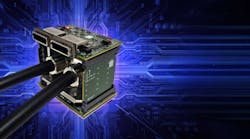RF Filters: Critical Components in the Wireless Ecosystem
RF and microwave filters are electronic components used to reject or accept a specific selected frequency signal. This is done to eliminate noise or unwanted signals.
A filter should have a low insertion loss (IL) in the passband, high isolation and rejection out of band, a high Q factor, excellent passive-intermodulation (PIM) performance, and, of course, be presented in a small cost-effective package with efficient power handling, A sharp transition slope wouldn’t hurt either.
Depending on the material and technology used, many types of filters are available. Among them are cavity filters, dielectric filters, coaxial filters, planar filters, electroacoustic filters, and a host of others.
The worldwide RF front-end module market size was valued at $24.56 billion in 2023, and is expected to rise to $83.21 billion by 2033, according to research done by Spherical Insights & Consulting. This reflects the keystone functionality provided by RF filters and their importance in the wireless industry. As the cloud and the devices that rely on them continue to expand in reach and functionality, it will only escalate their importance.
These critical components in wireless communication systems such as satellite, mobile, radar, and IoT not only enable a device to use a specific frequency, they also block the transfer of unwanted signal frequencies that can degrade signal quality. Every wireless device must have some form of filtering to pass or reject specific or multiple frequency bands. Generally using one or more coupled resonators, they can be made by using transmission lines, waveguides, or passive components.
Selecting the right filter for the communications system circuit will lead to a higher-quality RF signal. Here is some interesting news on RF Filter devices and their technology:
- 3D Devices Offer Promise to Advance Wireless Communications
- Lego-Like Photonic Chip Expands Bandwidth and Filter Control
- Partnership to Accelerate RF Filter Design
- BAW RF Filters Serve Wi-Fi Automotive and Access-Point Applications
- Wi-Fi UNII 5-8 Filter Features Low Insertion Loss
Related links:
About the Author
Alix Paultre
Editor-at-Large, Microwaves & RF
Alix is Editor-at-Large for Microwaves & RF.
An Army veteran, Alix Paultre was a signals intelligence soldier on the East/West German border in the early ‘80s, and eventually wound up helping launch and run a publication on consumer electronics for the U.S. military stationed in Europe. Alix first began in this industry in 1998 at Electronic Products magazine, and since then has worked for a variety of publications, most recently as Editor-in-Chief of Power Systems Design.
Alix currently lives in Wiesbaden, Germany.


